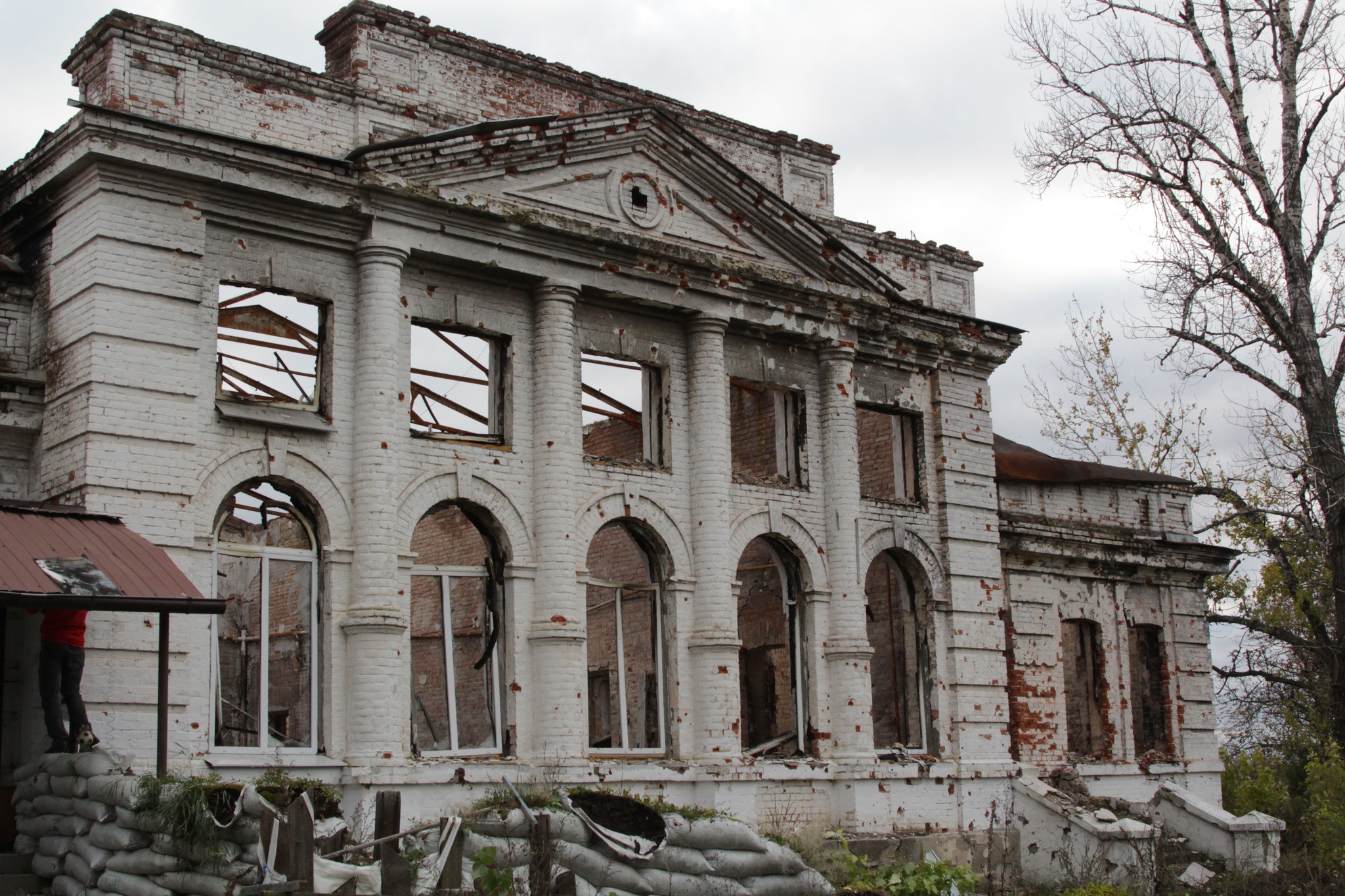![© Жером Барбоса [харків салтівка багатоповерхівки руйнування місто війна чб] © Jérôme Barbosa](https://khpg.org/files/img/1608816269.jpg)
The Kharkiv Human Rights Protection Group documents international crimes (genocide, crimes against humanity, war crimes) allegedly committed by the Russian occupiers in the Kharkiv Region.
In this article, we publish a summary of the events that took place in the Kharkiv Region during three years and were documented by the Kharkiv Human Rights Protection Group in the “T4P” initiative database.
You can read more about our organization’s approach to documenting international crimes, allegedly committed by the Russian occupiers, in Yevhen Zakharov’s publication.
We also would like to draw your attention to the fact that the information in this publication is approximate, based on the data collected and is constantly updated. Active collection of information continues — the Kharkiv Human Rights Protection Group asks eyewitnesses to send us information using the attached form.
1. General information about documented incidents
In total, our organization documented 19,606 incidents in the Kharkiv Region during the reporting period. When classified by type of event, the most recorded incidents were related to shelling or bombing — information about 12,913 such incidents was collected.
The largest number of incidents was recorded in the Izium district of the Kharkiv Region — a total of 5,307 cases. Information about 4,674 more incidents was documented in the Kharkiv district. Also, in the territory of the City of Kharkiv, our organization documented information about 3,761 incidents.
Information on 2,842 incidents was collected in the Kupiansk district of the Kharkiv Region. 2,116 incidents were recorded in the Chuhuiv district of the region during the period. 771 episodes were documented in the Bohodukhiv district, 104 episodes in the Lozova district, and 31 in the Berestyn district.
To date, personal data of 7,225 witnesses and victims of international crimes allegedly committed by the Russian occupiers, as well as 117 probable perpetrators of such crimes, have been recorded in the Kharkiv Region. In total, personal data of 5,660 victims, 697 witnesses and no less than 868 victims were collected and processed in the region.
The largest number of personal information of victims was documented in the Izium district of the region (no less than 2,567 persons); a large amount of data was also collected in the Kharkiv district including the City of Kharkiv (2,380 persons).
2. Information about victims among the civilian population

During the three years of the full-scale Russia-Ukraine war, the Kharkiv Human Rights Protection Group documented 6,754 incidents involving civilian casualties or violations of human rights.
In total, our team collected and processed information on 10,992 people who became victims of international crimes, allegedly committed by the Russian occupiers in the Kharkiv Region. Among these people, according to our data, 528 are children.
2.1. Information on deaths of civilians
During the reporting period, the KHPG documented a total of 1,731 incidents involving the death of civilians.
Geographically documented incidents can be distributed as follows:
|
Location |
Incidents documented |
|
Izium district |
552 |
|
Kupiansk district |
317 |
|
Kharkiv City |
296 |
|
Kharkiv district |
266 |
|
Chuhuiv district |
194 |
|
Bohodukhiv district |
96 |
|
Lozova districts |
7 |
|
Berestyn district |
3 |
2.2. Information on the injured among the civilian population
During the reporting period, our organization documented a total of 2,449 incidents related to injury or other harm to health.
Geographically documented incidents can be distributed as follows:
|
Location |
Incidents documented |
|
Kupiansk district |
573 |
|
Kharkiv City |
497 |
|
Izium district |
443 |
|
Kharkiv district |
399 |
|
Chuhuiv district |
381 |
|
Bohodukhiv district |
125 |
|
Lozova districts |
25 |
|
Berestyn district |
6 |
2.3. Information on the disappearance of civilians
During three years of the full-scale war, the KHPG recorded 1,861 incidents related to the disappearance of civilians in the territory of the Kharkiv Region.
Geographically documented incidents can be distributed as follows:
|
Location |
Incidents documented |
|
Izium district |
832 |
|
Kharkiv City |
293 |
|
Kupiansk district |
276 |
|
Kharkiv district |
239 |
|
Chuhuiv district |
133 |
|
Bohodukhiv district |
18 |
|
Lozova districts |
14 |
|
Berestyn district |
5 |
2.4. Information on incidents related to sexual violence and other human rights violations
Based on information documented in the “T4P” initiative database, a total of 20 victims of sexual violence were documented, including three children.
The Kharkiv Human Rights Protection Group also collected information about 715 incidents related to human rights violations (1,413 victims, including 31 children). The KHPG documented alleged facts of severe deprivation of physical liberty, torture and inhuman treatment, forced mobilization of the population by the Russian military, mass deportation of the civilian population to Russia, appropriation of civilians’ property, etc.
3. Information on civilian infrastructure facilities that have been damaged as a result of hostilities
During three years of the full-scale war, the KHPG collected information on the damage to 17,254 objects of civil infrastructure in the Kharkiv Region.
The most of documented objects that were destroyed or damaged as a result of hostilities are residential buildings — a total of 12,005 such buildings were recorded in the “T4P” database.
As a result of hostilities, 1,715 business and commercial facilities were damaged or destroyed.
According to our organization, 526 educational buildings were damaged or destroyed in the Kharkiv Region during that period. Also, 141 hospitals and places where the sick and wounded are collected were destroyed or damaged. Our organization also documented the destruction or damage of 1,579 vehicles.
In addition, damage was recorded to the following objects:
|
Type of objects |
Quantity |
|
Transport infrastructure facilities |
377 |
|
Farmland, forests |
246 |
|
Life support infrastructure facilities |
206 |
|
Governmental buildings and NGOs |
148 |
|
Buildings dedicated to art and entertainment establishments |
114 |
|
Buildings and objects dedicated to religion |
71 |
|
Historic monuments |
38 |
|
Not specified |
80 |
3.1. Information on residential and household buildings that have been damaged as a result of hostilities
Within this category, various buildings and objects used to meet the residential needs of the population are documented, in particular, multi-apartment and private residential buildings, garages, utility buildings, etc.
Geographically documented objects within this category can be distributed as follows:
|
Location |
Objects documented |
|
Kharkiv district |
3717 |
|
Izium district |
2876 |
|
Kharkiv City |
2118 |
|
Kupiansk district |
1349 |
|
Chuhuiv district |
1022 |
|
Bohodukhiv district |
781 |
|
Lozova districts |
111 |
|
Berestyn district |
30 |
3.2. Information on buildings dedicated to education that have been damaged as a result of hostilities

This category contains collected information about various educational facilities, the destruction or damage of which as a result of hostilities was documented by our organization during the reporting period. This category includes schools, lyceums, gymnasiums, kindergartens, university buildings, scientific institutions and centers, vocational schools, etc.
Geographically collected information about objects of this type can be displayed as follows:
|
Location |
Objects documented |
|
Kharkiv City |
205 |
|
Kupiansk district |
88 |
|
Kharkiv district |
76 |
|
Izium district |
65 |
|
Chuhuiv district |
51 |
|
Bohodukhiv district |
39 |
|
Lozova districts |
2 |
3.3. Information on hospitals and places where the sick and wounded are collected that have been damaged as a result of hostilities
![Центральна лікарня міста Ізюм [ізюм Залікарняна, 51 дрон документування руйнування харківська область харківщина] Central Hospital of Izyum](https://khpg.org/files/img/1608816955.jpg)
The KHPG documents cases of damage or destruction of medical facilities as a result of hostilities. This category includes damage to adult and children hospitals, emergency medical care centers, polyclinics, health centers, perinatal centers and other facilities.
By geographical criterion, documented objects of this category can be distributed as follows:
|
Location |
Objects documented |
|
Kharkiv City |
47 |
|
Izium district |
25 |
|
Kupiansk district |
23 |
|
Kharkiv district |
21 |
|
Chuhuiv district |
18 |
|
Bohodukhiv district |
7 |
3.4. Information on business and commercial facilities that have been damaged as a result of hostilities
Within this category, information about various objects related to business activity and commercial purposes that were damaged as a result of hostilities was documented, in particular, shops, stores, malls, markets, offices, post offices, car service stations, hotels, and others.
Geographically collected information about objects of this type can be distributed as follows:
|
Location |
Objects documented |
|
Kharkiv City |
540 |
|
Kharkiv district |
312 |
|
Chuhuiv district |
255 |
|
Izium district |
253 |
|
Kupiansk district |
237 |
|
Bohodukhiv district |
99 |
|
Lozova districts |
18 |
|
Berestyn district |
1 |
4. Information on the types of events that were documented during the reporting period
During three years of the full-scale Russia-Ukraine war, the KHPG’s team documented information on 19,606 incidents in the territory of the Kharkiv Region. Of these, almost two-thirds of the incidents (12,913) are related to shelling and bombing.
A significant amount of documented information is related to the disappearance of persons — our organization documented 1,839 incidents during the reporting period. Also, among all documented incidents, 494 are related to torture or inhumane treatment, 287 are related to severe deprivation of physical liberty, and 26 are related to sexual violence.
The KHPG has also documented the following events:
|
Type of event |
Incidents documented |
|
Damage caused by explosive devices |
383 |
|
Utilizing the presence of a civilian or other protected person to render certain points, areas or military forces immune from military operations |
241 |
|
Appropriation of property of civilians |
174 |
|
Small arms fire |
154 |
|
Wilful killing of a civilian (murder) |
109 |
|
Capture of a civilian building |
97 |
|
Wilful causing great suffering, or serious injury to body or health |
30 |
|
Deportation or forcible transfer of population to Russia |
28 |
|
Commitment of outrages upon personal dignity |
22 |
|
An attack against personnel, installations, material, units or vehicles involved in a humanitarian assistance |
9 |
|
Vehicle damage |
4 |
|
Forced conscription |
2 |
|
Not specified |
45 |
According to data documented by the KHPG, the largest number of incidents related to hits from shelling and bombing were recorded in the Kharkiv district of the region —3,748 episodes.
A significant number of such incidents were also recorded in the Izium district of the Kharkiv Region — the KHPG collected information about 3,236 episodes. 2,297 such incidents were documented in the City of Kharkiv.
Information on 1,610 such incidents was collected in the Kupiansk district of the Kharkiv Region. Also, 1,456 such incidents were documented in the Chuhuiv district, 481 incidents — in the Bohodukhiv district, 61 and 14 incidents — in the Lozova and Berestyn districts, respectively.
5. Information on documented facts that can be preliminarily qualified as international crimes allegedly committed by the Russian occupiers
According to the information collected by the KHPG, during three years of the full-scale war, in the territory of the Kharkiv Region our organization documented the following facts, which can be preliminarily qualified as international crimes, allegedly committed by the Russian occupiers:
|
Preliminary qualification of event |
Number of incidents |
|
RS 8 (2) (b) (ii) Attack on a civilian object |
7850 |
|
RS 8 (2) (b) (iv) Destruction or damage to property |
5237 |
|
RS 8 (2) (b) (iv) Injury of a civilian person due to shelling |
2292 |
|
RS 7 (1) (i) Enforced disappearance of a person |
1861 |
|
RS 8 (2) (b) (iv) Death of a civilian person due to shelling |
1449 |
|
RS 8 (2) (b) (ix) Damage or destruction of historical monuments, hospitals, religious buildings, education, science and art institutions |
636 |
|
RS 7 (1) (f) or 8 (2) (а) (іі) Torture or inhuman treatment of civilians or military |
506 |
|
RS 7 (1) (е) Illegal imprisonment or other severe deprivation of physical liberty |
505 |
|
RS 8 (2) (b) (xx) Employing weapons or methods of warfare that cause superfluous damage or indiscriminate suffering of people, or causes indiscriminate destruction, or is prohibited by international agreements |
410 |
|
RS 8 (2) (b) (xx) Mining of territories, settlements or civilian objects with anti-personnel mines, anti-tank mines, trap mines, as well as the use of remote mining systems |
320 |
|
RS 8 (2) (b) (xxiii) Utilizing the presence of a civilian or other protected person to render certain points, areas or military forces immune from military operations |
255 |
|
RS 8 (2) (a) (iv) Extensive destruction or appropriation of property |
222 |
|
RS 7 (1) (а) or 8 (2) (а) (i) Willful killing of a civilian by a firearm or another weapon |
179 |
|
RS 8 (2) (b) (xvi) Pillaging a town or place, even when taken by assault |
103 |
|
RS 8 (2) (b) (v) Shelling of a settlement without consequences |
69 |
|
RS 8 (2) (а) (ііі) Willful causing great suffering, or serious injury to body or health |
59 |
|
RS 8 (2) (b) (iv) Damage to the natural environment due to shelling |
46 |
|
RS 8 (2) (b) (xxii) Sexual violence |
26 |
|
RS 7 (1) (d) or 8 (2) (а) (vii) or 8 (2) (b) (viii) Deportation or forcible transfer of population to Russia |
25 |
|
RS 8 (2) (b) (xxi) Commitment of outrages upon personal dignity |
22 |
|
RS 8 (2) (b) (iii) Attack against personnel, installations, material, units or vehicles involved in a humanitarian assistance |
17 |
|
RS 8 (2) (b) (xxv) Obstructing humanitarian missions in providing food or water, destruction of supplies of food or drinking water |
8 |
|
RS 8 (2) (a) (ii) Use of an inappropriate place for detention |
8 |
|
RS 8 (2) (b) (xvii), 8 (2) (b) (xviii) Use of chemical or other poisonous weapons, including phosphorus bombs |
4 |
|
RS 8 (2) (a) (v) Compelling a prisoner of war or other protected person to serve in the forces of a hostile Power |
2 |
|
RS 8 (2) (a) (vii) Making improper use of the flag or of the military insignia and uniform of the enemy |
2 |
These data require clarification. The category names in the “Preliminary qualification of an event” column are in no case an accurate description of an international crime under the Rome Statute of the International Criminal Court and is provided for information purposes only. Only the court is authorized to provide the final qualification of the event.
Conclusions
Having analyzed the documented information it can be stated that during three years of the full-scale Russia-Ukraine war a significant number of events that can be preliminarily qualified as international crimes, allegedly committed by the Russian occupiers, took place.
In particular, the constant analysis and clarification of the entire array of collected data give us the opportunity to preliminarily qualify the mentioned events as war crimes in accordance with Article 8 paragraph (2) (a) and (2) (b) of the Rome Statute of the International Criminal Court, as crimes against humanity in accordance with Article 7 paragraph (1) of the Rome Statute of the International Criminal Court, and as genocide under Article 6 of the Rome Statute of the International Criminal Court.
The Kharkiv Human Rights Protection Group continues to document, update and research information in order to form, properly present and argue the above-mentioned legal opinions within the framework of international criminal investigation and procedures of international judicial institutions.
Information collection is ongoing. If you can provide additional information, please use the form.
The author is grateful to the whole KHPG team, without the joint coordinated and dedicated work of which this summary would be impossible.
The Kharkiv Human Rights Protection Group expresses its gratitude to our donors, in particular, the European Union, People in Need, the Prague Civil Society Centre, Open Archive, the United States of America Embassy, the USAID, DIGNITY — Danish Institute Against Torture and individual philanthropists, without whom all our work would be either impossible or feasible on a much more modest scale.



